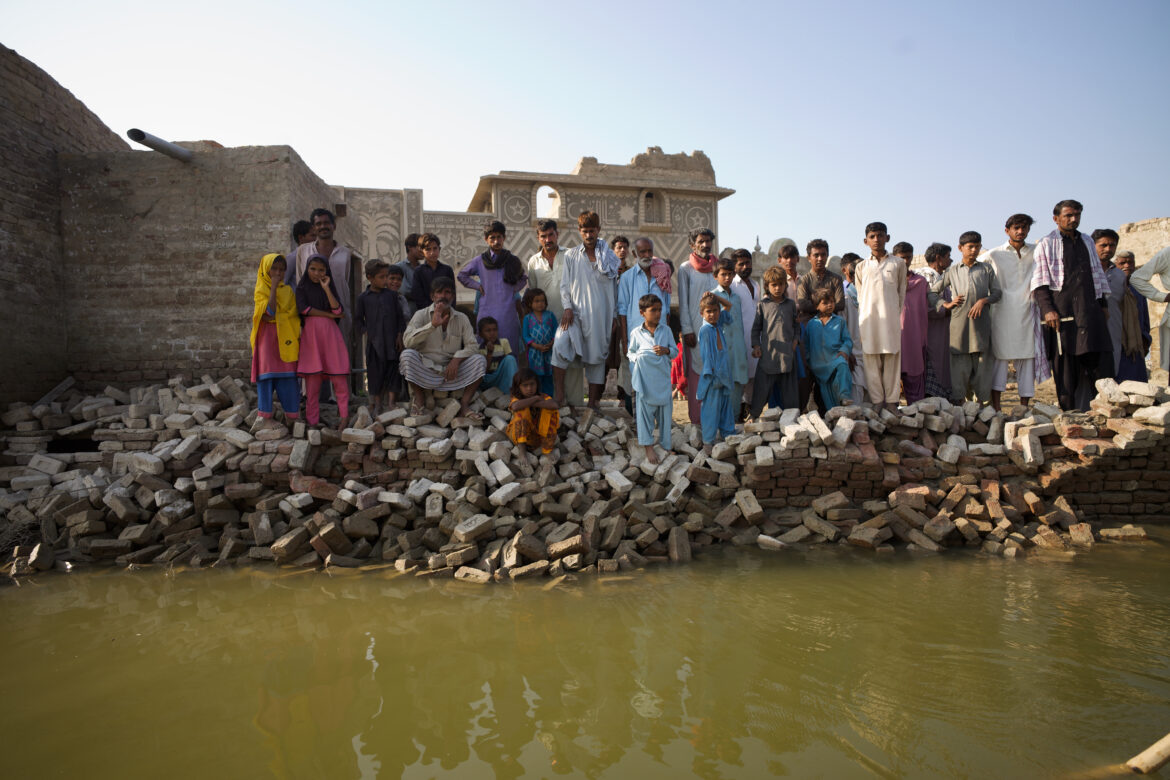2022 saw Pakistan’s monsoon season turn devastating. Sea-like floods and landslides, as well as significant rainfalls touched all four provinces and affected 15% of the country’s population, with 20.6 million people requiring urgent humanitarian aid. Even today, over a year later, many continue to face endless cycles of hopelessness and displacement caused by the aftershocks of this crisis. Despite these ongoing stresses, climate anxiety has failed to make headlines.
‘Climate anxiety’ refers to the heightened emotional and mental distress responses to dangerous changes in the climate system.
Although the water has receded from what Antonio Guterres, UN Secretary-General, called ‘a monsoon on steroids’, the scars of the catastrophe are still poignant; basic necessities are still missing, and still impacting millions. The acceleration of the climate crisis has severely affected developing countries such as Pakistan, which lack the correct resources and infrastructure to prepare for and cope with such ecological disasters. With more than 13,000 km of road damage, loss of thousands of acres of agricultural land, and more than two million houses destroyed, the total damage at the time exceeded $14.9 bn.
International organizations such as UNICEF and the Red Cross have delivered critical relief, with the first wave of aid reaching 3.6 million people with primary health-care services. They’ve also offered mental health and psychosocial support, and screening children for acute malnutrition. Water treatment plants were also distributed, offering 187,000 litres of safe drinking water to 37,400 people each day. Those displaced were either sent to relief camps or into makeshift homes inside tents or abandoned buildings.
Even with immediate concerns of shelter, water, and food largely documented, for many it is the daily fatigue caused by repeated climate disasters that has taken a toll. Caused by the constant flow of disasters and uncertainty, this overshadows systemic and infrastructure issues. Many still have no clear plan for shelter, and worry for the future of their families and livelihoods. The constant cycle of destruction has left people feeling anxious and overwhelmed, with the constant cycle of destruction continuously forcing many to rebuild endlessly – perhaps asking whether action itself has lost its meaning if their houses keep getting washed away.
Across the Hindu Kush Himalayas, floods have caused a huge lake to form and repeatedly forced thousands of residents to leave their destroyed farms, homes and roads. The mountain’s ecology is so fragile, that even the slightest change in temperature can wreak havoc, says Furrukh Bashir, the regional head of the Pakistan Meteorological Department. In Darkut, a village within these mountains, paramedics confirm the widespread mental distress felt by people; they complain about sleeplessness and stress, longing for the homes and lands that went underwater before their eyes. Javel Iqbal, who has worked with residents for over a decade, points out that it was crucial for the government to recognize and find solutions to the mental health consequences of climate change impacts.
However, for countries drowning in high public debt and extreme weather, creating resources to transform governance for the dangerous decade ahead is particularly challenging. In the summer of this year, Pakistan launched the National Adaptation Plan to create a strategic framework toolkit for the government to protect its population. The financial gap between developing and developed states to achieve the Sustainable Development Goals shows that achieving climate goals is not possible without international support. Although the UN has been providing immediate relief, flash appeals are underfunded. Donor countries, as per their commitment to climate goals, have yet to fulfill their commitment to provide 0.7% of their Gross National Income as development assistance to developing countries. Multilateral Development Banks should expand their grant lending and enhance the voice of these states in the World Bank and the IMF. Transformational milestones are necessary to build a global consensus in financing solutions in the face of crippling inequalities.
This cycle of vulnerability is a trap for most. Relying on collecting clean drinking water is strenuous, with some having to walk more than fifteen miles daily to do so. People’s livelihoods have been completely destroyed, and their efforts to rebuild could become pointless at any moment. The poorest women and children are always the most vulnerable, risking waterborne diseases – such as malaria, cholera, and dengue fever, high malnutrition, and an especially uncertain future. Assistance for the most vulnerable countries should not burden the poor further, and actions are crucial to contribute to finding a long-term solution for victims of the climate crisis.
Over the past few years, escalating floods and monsoons in Pakistan have taken a toll on the citizens affected. The poor infrastructure and lack of psychosocial support have worsened people’s anxiety towards the unpredictable nature of natural disasters in our time – making most feel powerless towards the future. Looking forward, a real message and action from global leaders insisting on change would restore trust in international solidarity and global cooperation. This case will stand as an example of how to respond amidst challenges around climate change. In these circumstances, the impetus for action relies on hope, driving individuals forward. It is imperative that the international community and local governments do not falter in their commitment.
Edited by Maddy Chilsom
Azélie Lemoine is a 4th year McGill University student, pursuing a B.A. in International Development Studies and Political Science. As an editor for Catalyst, she is particularly interested in international human rights, diplomacy and immigration policies.

